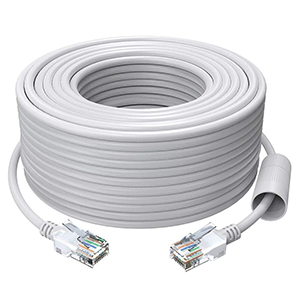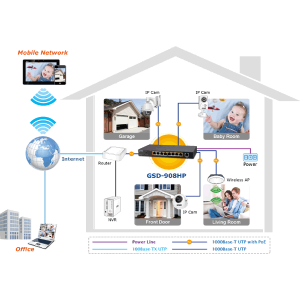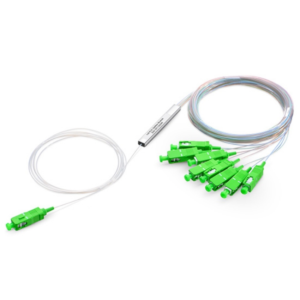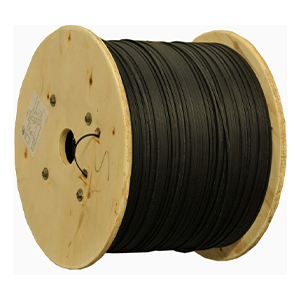OLT (Optical Line Terminal) and ONU (Optical Network Unit) play key roles in FTTH networks. This article will explore the interconnection problems between OLT and ONU and their solutions. We will first explain the importance of OLT and ONU collaboration in FTTH networks and explain the impact of OLT and ONU interconnection problems on network performance.
Next, we will analyze the common problems faced by OLT and ONU interconnection, including physical connection problems, protocol compatibility problems, management and maintenance problems, and performance matching problems. We will explain the impact of these problems on interconnection. Subsequently, we will introduce the key methods to solve the interconnection problems between OLT and ONU, including standardization and specification formulation, technological innovation and interoperability improvement, centralized management and intelligent diagnosis, as well as performance optimization and dynamic allocation. Finally, we will look forward to the future development trend of OLT and ONU interconnection.
The importance of OLT and ONU interconnection
OLT (Optical Line Terminal) and ONU (Optical Network Unit) are two core components in the fiber access network (FTTx) system. The OLT is located in the central office of the service provider and is connected to multiple ONUs via optical fiber. The ONU is usually deployed on the user side and is responsible for converting optical signals into electrical signals and providing broadband services to user devices.
The criticality of OLT and ONU collaboration in FTTH networks:
(1) FTTH network architecture foundation:
- OLT (optical line terminal) and ONU (optical network unit) are the two core components of the FTTH network.
- The interconnection between OLT and ONU is the fundamental basis of the FTTH network architecture and determines the topology of the entire network.
(2) Data transmission channel:
- OLT and ONU are connected to each other via optical fiber to form a data transmission channel.
- This channel is the main path for upstream and downstream data transmission in the FTTH network and is crucial to the overall performance of the network.
(3) Service carrying support:
- OLT and ONU collaborate to realize end-to-end service carrying from the network center to the user terminal.
- The coordination between the two parties is the basis for providing high-speed broadband, multimedia and other services.
(4) Network management basis:
- Good interconnection between OLT and ONU is the prerequisite for effective management between the center and edge of the FTTH network.
- Through the interconnection between OLT and ONU, centralized monitoring and unified management of the entire FTTH network can be achieved.
In short, the organic collaboration between OLT and ONU is the key foundation for the operation of the FTTH network, which determines the topology, service carrying capacity and management level of the entire network.
The impact of OLT and ONU interconnection problems on network performance:
(1) Transmission performance:
- The quality of the optical fiber connection between OLT and ONU directly affects the rate and reliability of data transmission.
- Issues such as optical loss and dispersion in optical fiber connections will reduce transmission performance.
(2) Service quality:
- The quality of OLT and ONU interconnection will affect the service quality of key services such as voice and video.
- Unstable connection or high latency will lead to reduced service quality and affect user experience.
(3) Network capacity:
- The interconnection topology of OLT and ONU directly determines the coverage and carrying capacity of the FTTH network.
- Irrational topology will limit the scalability and upgrade potential of the network.
(4) Management efficiency:
- The interconnection status of OLT and ONU is the basis of network management.
- Interconnection problems will affect the perception of the network management system and reduce management efficiency.
Therefore, high-quality interconnection between OLT and ONU is the key to ensuring the overall performance of the FTTH network. Only when the two are highly coordinated can the FTTH network play its due transmission performance, service quality and management efficiency.
Common problems of OLT and ONU interconnection
Common problems of OLT and ONU interconnection include signal attenuation, device compatibility issues and configuration errors. Signal attenuation may cause slower data transmission speed or connection interruption; device compatibility issues may cause the OLT and ONU to fail to communicate normally; and configuration errors may affect network performance and stability. Solving these problems requires careful inspection of connection quality, device compatibility and configuration settings.
Physical connection issues:
- Fiber connection quality: Fiber connection is the physical basis between OLT and ONU, and the connection quality directly affects the transmission performance. Problems such as poor fiber connector connection and excessive fiber loss will lead to reduced signal quality.
- Optical transceiver compatibility: OLT and ONU must use compatible optical transceivers, otherwise the interconnection of optical signals cannot be achieved. Incompatible optical modules will cause connection failure.
Protocol compatibility issues:
- Protocol differences: OLT and ONU usually use different network protocols, such as GPON, EPON, etc., which require adaptation and conversion. Incompatible protocols will result in the inability to establish an effective connection.
- Version mismatch: Even if the same protocol is used, if the versions of OLT and ONU do not match, it may also lead to interconnection failure. It is necessary to ensure the consistency of protocol versions.
Management and maintenance issues:
- Centralized management: The number of widely distributed ONUs in the FTTH network is huge, which brings challenges to the centralized management of OLT. Failure to obtain the ONU status in time may cause interconnection problems.
- Fault diagnosis: When there is a connection failure between OLT and ONU, it is difficult to quickly locate the problem, which brings difficulties to maintenance.
Performance matching issues:
- Bandwidth matching: There are certain differences between OLT and ONU in upstream and downstream bandwidth capabilities. Bandwidth mismatch will affect the overall network performance.
- Delay matching: There may also be differences in delay characteristics between OLT and ONU, resulting in uncontrollable delay and affecting the quality of key services.
All of the above problems will affect the interconnection between OLT and ONU to varying degrees, restricting the overall performance of the FTTH network. Therefore, effective technical measures must be taken to solve these interconnection problems.
Methods to solve the interconnection problem between OLT and ONU
The methods to solve the interconnection problem between OLT and ONU include: checking the physical status of the fiber connection to ensure that there is no damage or contamination; verifying the compatibility of the equipment to ensure that the OLT and ONU models match; correctly configuring the equipment parameters to ensure that the communication protocol is consistent; regularly monitoring network performance, and promptly discovering and handling abnormal situations. These measures can effectively improve the stability and performance of the network.
Standardization and specification formulation:
- Standardization plays a key role in solving the interconnection problem between OLT and ONU.
- Related standardization organizations such as ITU-T and IEEE have formulated standards such as GPON and EPON, which provide specifications for the interconnection between OLT and ONU.
- These standards specify technical requirements for the physical layer, MAC layer, and management layer, ensuring the compatibility of OLT and ONU.
- At the same time, developing detailed deployment and maintenance specifications will also help solve interconnection problems in practical applications.
Technological innovation and interoperability:
- In terms of physical connection, develop high-performance, low-loss optical fiber connection technology to improve transmission quality.
- Develop more compatible optical transceiver modules to ensure the interconnection of optical modules between OLT and ONU.
- At the protocol level, develop protocol conversion and adaptation technologies to achieve interoperability between different types of OLT and ONU.
- Promote the modular design of OLT and ONU hardware and software to improve interchangeability and compatibility.
Centralized management and intelligent diagnosis:
- Use a centralized network management system to achieve unified monitoring and management of decentralized ONUs.
- Use big data analysis and artificial intelligence technology to improve the intelligence level of fault diagnosis.
- Simplify the deployment and maintenance of OLT and ONU through remote configuration, automatic discovery and other means.
Performance optimization and dynamic allocation:
- Optimize the performance matching of OLT and ONU in key indicators such as bandwidth and latency.
- Use technologies such as adaptive modulation and dynamic bandwidth allocation to dynamically adjust the performance of OLT and ONU.
- Flexibly allocate resources between OLT and ONU according to business needs to improve overall performance.
Combined use of the above methods can effectively solve the problems of physical connection, protocol compatibility, management and maintenance, performance matching, etc. in the interconnection between OLT and ONU, and ensure the efficient operation of FTTH network.
Summary
The efficient interconnection between OLT and ONU is crucial for the reliable operation of FTTH network. Our company has long focused on the research and development and application of FTTH network technology and has rich practical experience. We are committed to providing customers with end-to-end FTTH solutions, including high-performance OLT and ONU products.
Our products use industry-leading technology and have achieved excellent levels in physical connection, protocol compatibility, centralized management, etc., which can effectively solve various problems in the interconnection between OLT and ONU. At the same time, our team of engineers will provide you with professional system planning, equipment selection and on-site debugging services to ensure the smooth deployment and stable operation of FTTH network. Contact us now to learn more. We will do our best to provide you with the best products and solutions.
OLT and ONU FAQ
An Optical Line Terminal (OLT) is a device at the service provider’s end of a fiber-optic network that connects to multiple Optical Network Units (ONUs) or Optical Network Terminals (ONTs) at the customer’s end. The OLT manages and controls the data flow to and from the ONUs.
Common issues include signal loss, compatibility problems, misconfigured settings, incorrect fiber connections, and hardware malfunctions.
Check the fiber connections for damage or dirt, ensure the fiber is properly aligned, and verify the power levels and signal strength. Cleaning connectors and replacing damaged cables can help.
Ensure that both the OLT and ONU are compatible with each other in terms of protocol and standards. Refer to the manufacturer’s specifications and documentation for compatibility details.
Configuration issues may include incorrect VLAN settings, mismatched data rates, or incorrect protocol configurations. Verify settings on both the OLT and ONU to ensure they match.
Use network management tools or software provided by the OLT and ONU manufacturers to check the connection status and configuration. Verify that the ONU is properly registered with the OLT.
Ensure that the ONU is powered on and correctly connected. Check the physical connections and cables, and verify that the ONU is properly configured and registered with the OLT.
Adjust the data rate settings on either the OLT or ONU to ensure they match. Refer to the device documentation for instructions on configuring data rates.
Check for and address any physical issues with the fiber cables, ensure that both devices are properly configured, and examine for possible network congestion or interference.
Use network management and monitoring tools to track performance metrics such as signal strength, error rates, and traffic levels. Many OLT and ONU devices come with built-in diagnostics tools for this purpose.





